Monthly Archives: August 2016
Northern Bobwhite
Carolina Wren
Little Blue Heron
Scissor-tailed Flycatcher
Least Tern
You Gotta Play Ball to Lifer in Kansas City
If you are a birder who yearns to go on an out-of-state lifer grab but can’t because of your commitments to non-birding family members or significant others, pay attention. If you are stuck at home drooling over others’ epic blog posts of exotic birds from far-off lands, listen up. This post is for you. Like you, when it comes to birding I don’t have the devil-may-care attitude of the retired, the single, or the extremely rare birding couple. In recent months I discovered there was a whole pocket of lifers waiting for me not too far to the south in the Kansas City area. KC is less than 8 hours away by car, which is nothing considering its potential for lifer glory. Dragging the family there for birds was not going to fly. Neither was spending the time and money to go on a solo adventure. So I hatched a plan to get to KC where everyone won.
Since Melissa and Evan are die-hard Minnesota Twins fans, all I had to do to sell them on the idea was an offer to take them to KC to see their beloved team take on the Royals.
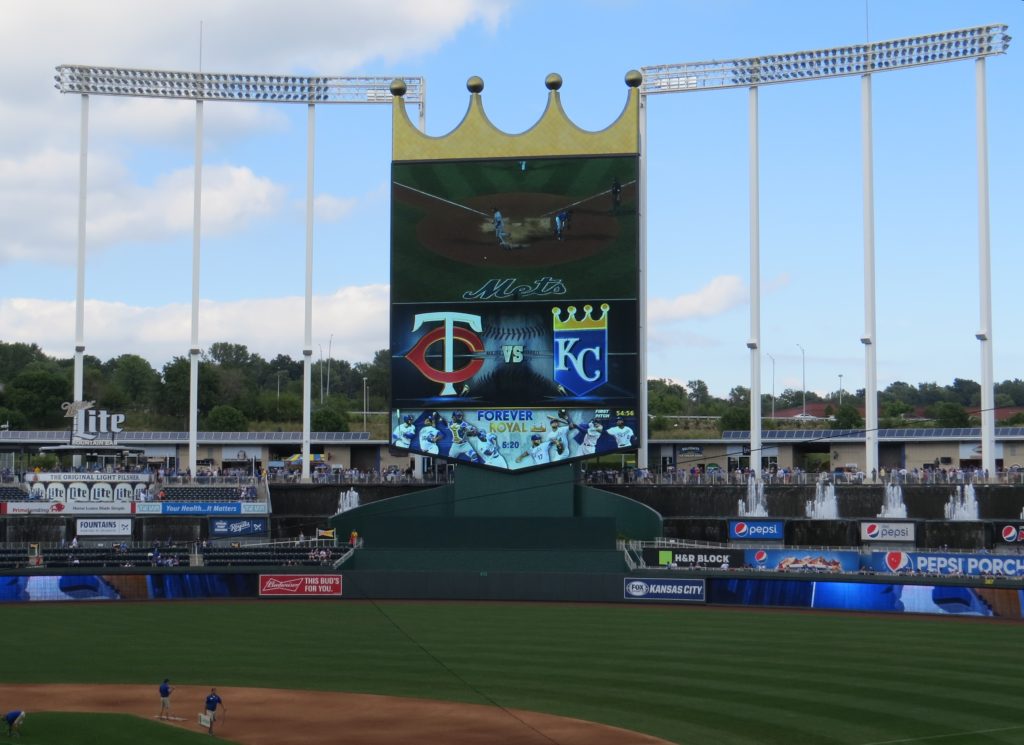 That pretty much sealed the deal for them, but for added insurance I got seats which put Evan in a position of high probability to check off a major bucket-list item. It worked.
That pretty much sealed the deal for them, but for added insurance I got seats which put Evan in a position of high probability to check off a major bucket-list item. It worked.
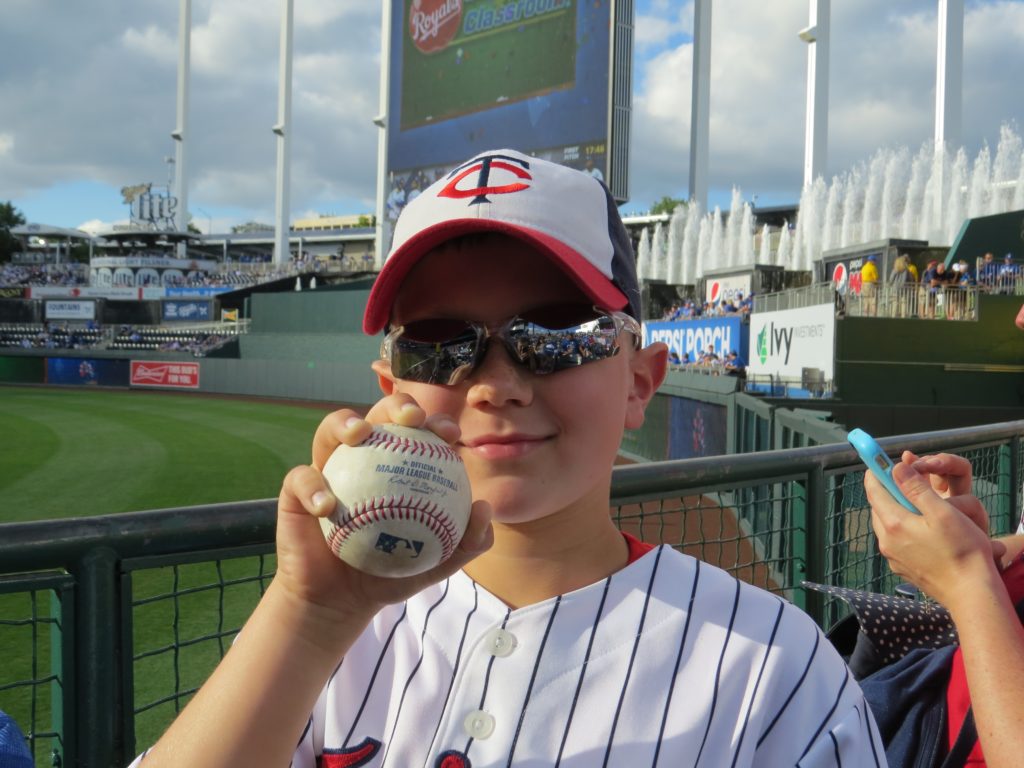 Having the entire family on the jumbo-tron and on TV was the icing.
Having the entire family on the jumbo-tron and on TV was the icing.

So what about Marin? She is neither a fan of birds or baseball. All it took to win her over was the promise of three nights in hotels with pools. It helped that the kids thought these pools were awesome.
 I mean, seriously, an indoor/outdoor pool where you can actually swim under the freaking wall of the hotel–how cool is that? This is the kind of thing that blows kids’ minds.
I mean, seriously, an indoor/outdoor pool where you can actually swim under the freaking wall of the hotel–how cool is that? This is the kind of thing that blows kids’ minds.
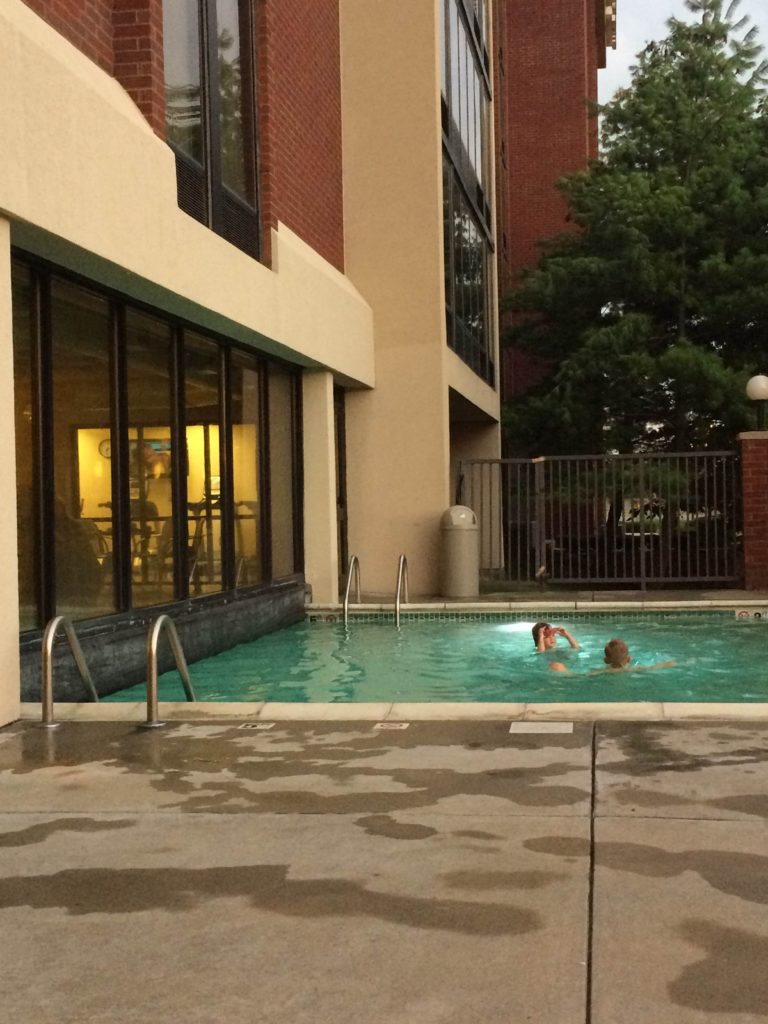 So what about the birds? Let’s get on with it then. I had a number of targets of regular breeders in this central part of the country. The first one I targeted is one that has caused me heartache on a couple of occasions in Minnesota, the Least Tern. Since this bird breeds in shallow rivers with sandbars, Omaha is a great place to go after them because of the nearby Platte River. Unfortunately, though, it was getting late in the year to find any, and my chances were slim. Regardless, we were going to give it a try, checking out a couple of spots on the way to our Omaha hotel. The first stop was a place I’d been watching on eBird for months and was eager to see, a sandpit lake in Fremont, Nebraska.
So what about the birds? Let’s get on with it then. I had a number of targets of regular breeders in this central part of the country. The first one I targeted is one that has caused me heartache on a couple of occasions in Minnesota, the Least Tern. Since this bird breeds in shallow rivers with sandbars, Omaha is a great place to go after them because of the nearby Platte River. Unfortunately, though, it was getting late in the year to find any, and my chances were slim. Regardless, we were going to give it a try, checking out a couple of spots on the way to our Omaha hotel. The first stop was a place I’d been watching on eBird for months and was eager to see, a sandpit lake in Fremont, Nebraska.

Upon initial inspection, I didn’t see what I came to see. I don’t know if I just overlooked it at first or if it flew in when I wasn’t looking, but after ten minutes I spotted a Least Tern bathing off a sandbar right in front of me!
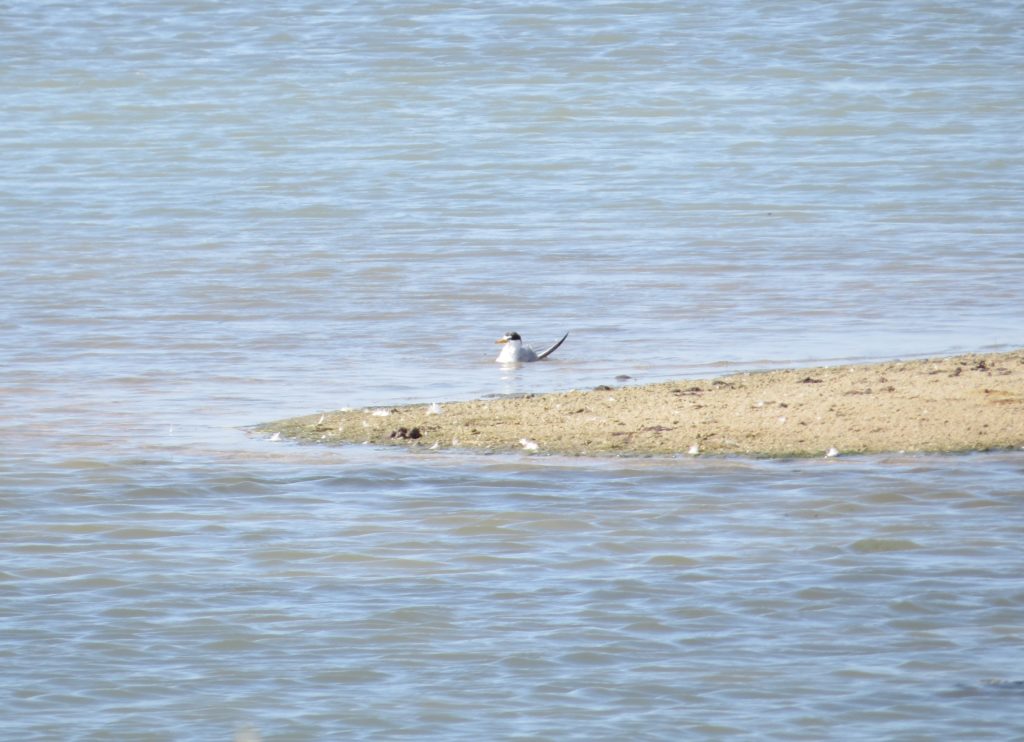 I’ve been yearning to see that bright yellow-bill for awhile. My family waiting in the car probably didn’t even notice the fist-pumping going on outside over this lifer.
I’ve been yearning to see that bright yellow-bill for awhile. My family waiting in the car probably didn’t even notice the fist-pumping going on outside over this lifer.
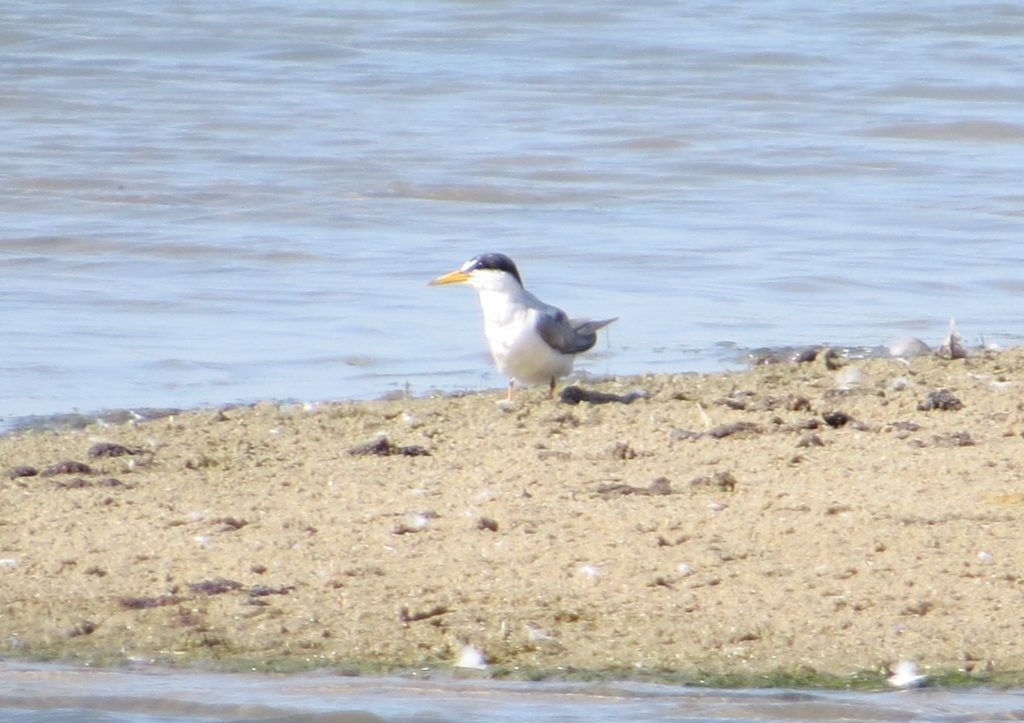 Getting a lifer at the first stop for that species keeps the non-birding family happy. And even better (for them) was that this bird only stuck around for 10 minutes before flying off forever.
Getting a lifer at the first stop for that species keeps the non-birding family happy. And even better (for them) was that this bird only stuck around for 10 minutes before flying off forever.
The plan for Day 2 of our trip was to meander our way from Omaha to Kansas City via the back roads in the hopes of turning up a Scissor-tailed Flycatcher, the number-one target of the trip. STFL is a rarity in southern Nebraska even though northern Kansas is part of its normal range. I decided to drive to a spot in southeastern Nebraska where a pair had nested in June. There hadn’t been reports for two months, but I figured it was worth a shot anyway. When we were still five miles from the site, I was shocked when a Scissor-tailed Flycatcher lifer flew across the road in front of us. Unfortunately we could not track it down for better looks, so it was a bittersweet sighting. I wasn’t worried because I picked a southerly route that would put us by several reported STFL sightings in Kansas. But one-by-one as we drove by those sites, I was getting worried. We weren’t having any luck. Common Nighthawks are nice, but this was supposed to be a Scissor-tailed Flycatcher on this wire.
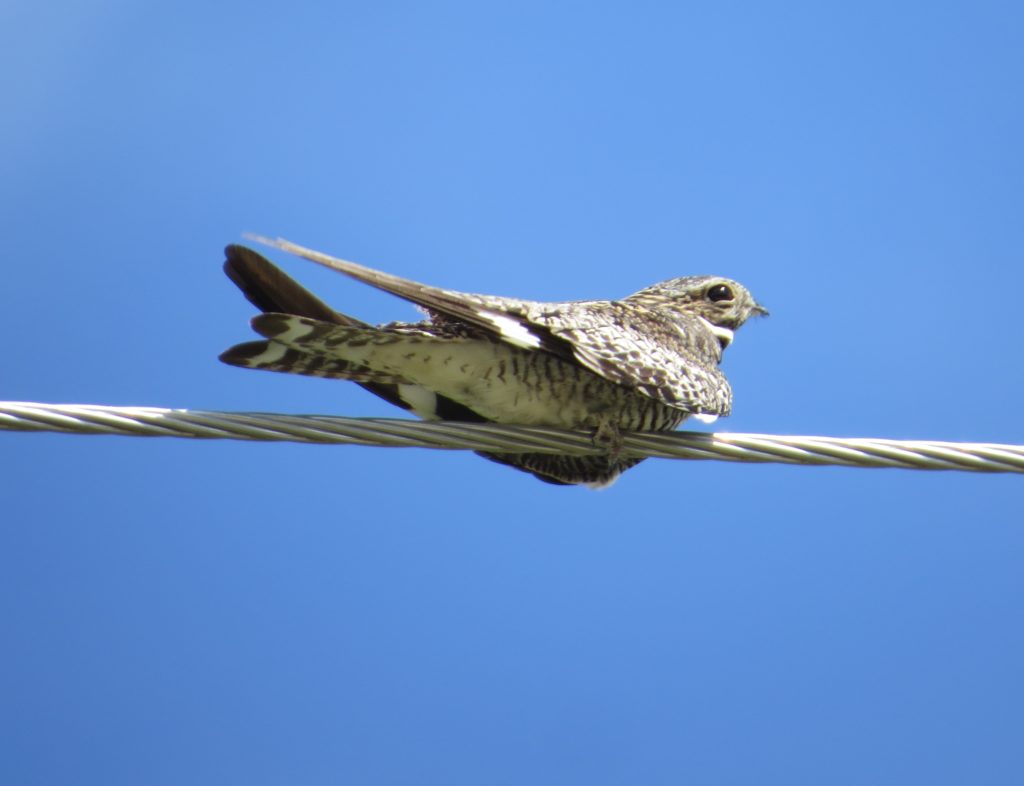
I was frustrated, but it was time to switch gears to look for another lifer at Baker Wetlands just outside of Lawrence, Kansas. The Little Blue Heron shows up in Minnesota every few years, but I haven’t connected with one yet. I was hoping to fix that here. It took awhile, but eventually we found a distant bird toward the far eastern end of the Baker Wetlands. I was going to settle for some blurry distant shots until Melissa noticed a service road that would put us closer to the bird. What a fantastic-looking Heron.
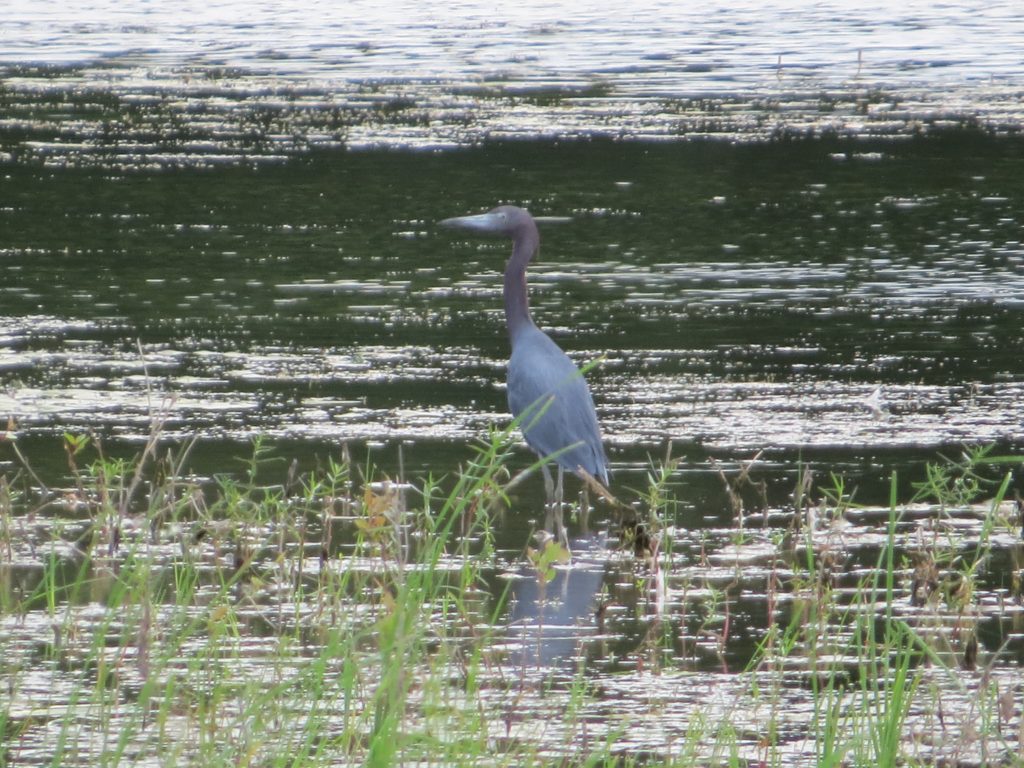
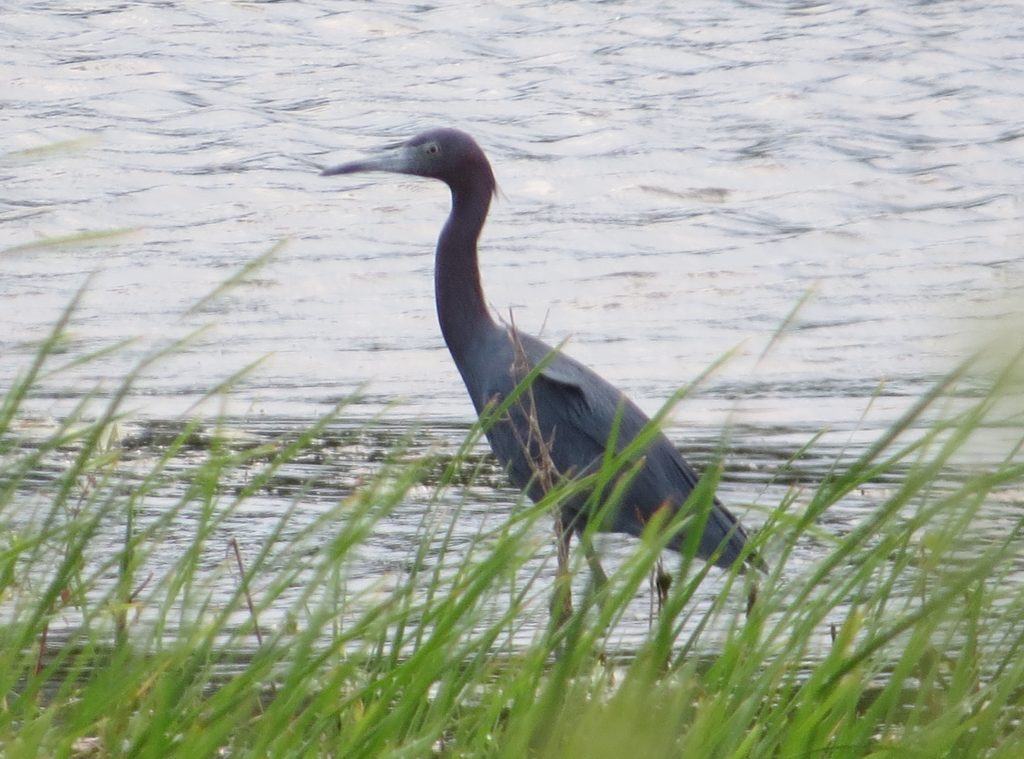 It was finally time to get to our hotel–Marin was getting antsy for a pool fix. The Heron lifer felt good, really good, but I was still bummed about the lack of Scissor-tailed Flycatchers. Then just 20 minutes from the hotel, I spied one on a fence and turned around for some looks. It was a STFL alright, but a nub-tailed one and not the big male I was hoping to see. Hopes for that, along with a few other birds, would have to be pinned on Day 3.
It was finally time to get to our hotel–Marin was getting antsy for a pool fix. The Heron lifer felt good, really good, but I was still bummed about the lack of Scissor-tailed Flycatchers. Then just 20 minutes from the hotel, I spied one on a fence and turned around for some looks. It was a STFL alright, but a nub-tailed one and not the big male I was hoping to see. Hopes for that, along with a few other birds, would have to be pinned on Day 3.
Day 3 would be an exciting one. My old friend and college roommate, Malcolm Gold, picked me up early that morning to help me find some of the birds I was looking for. Malcolm and I both got into birding long after college and have previously only birded once together back in 2013. Having lived in the KC area for a few years now, he knew where to go and was literally and figuratively in the driver’s seat for this outing. It was good to see Malcolm again and nice to be with a local who knew what he was doing. Malcolm thought we should try for a Painted Bunting right away along a brush-lined, somewhat abandoned road in an industrial area. While a PABU would be sweet to land on the life list, I knew that late August was pushing it for having this bird still be around. We never did find one, but Malcolm did point out a lifer of sorts, the Yellow-billed Cuckoo! Previously I had only ever heard one, so this was quite a treat to finally see one.
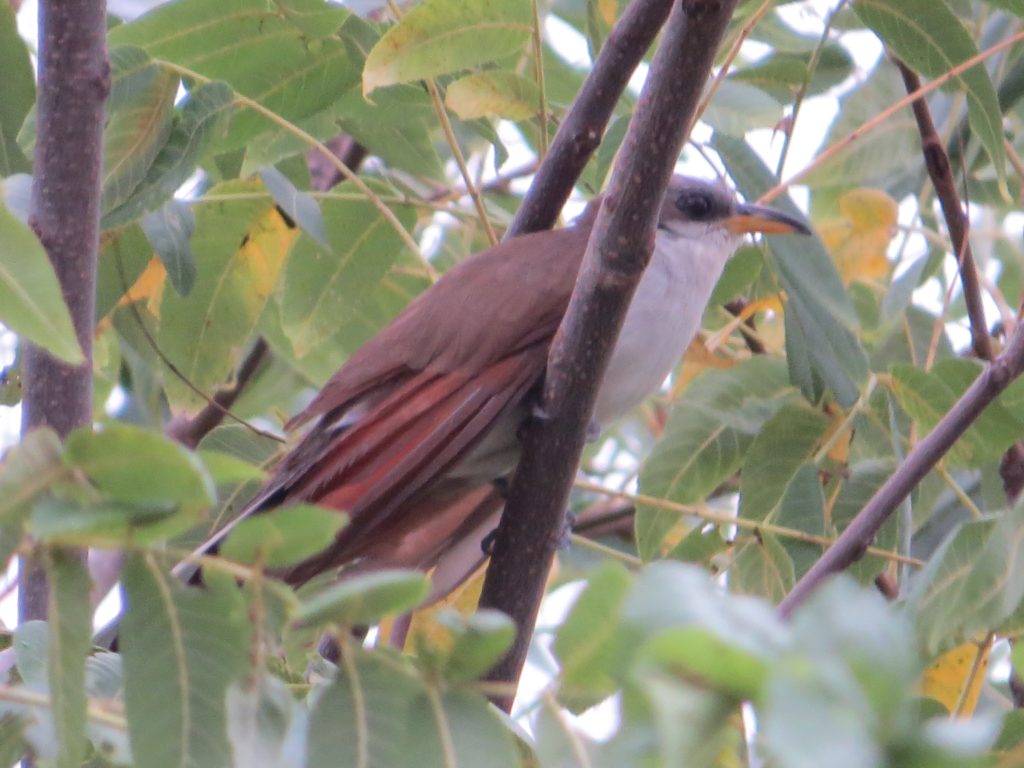
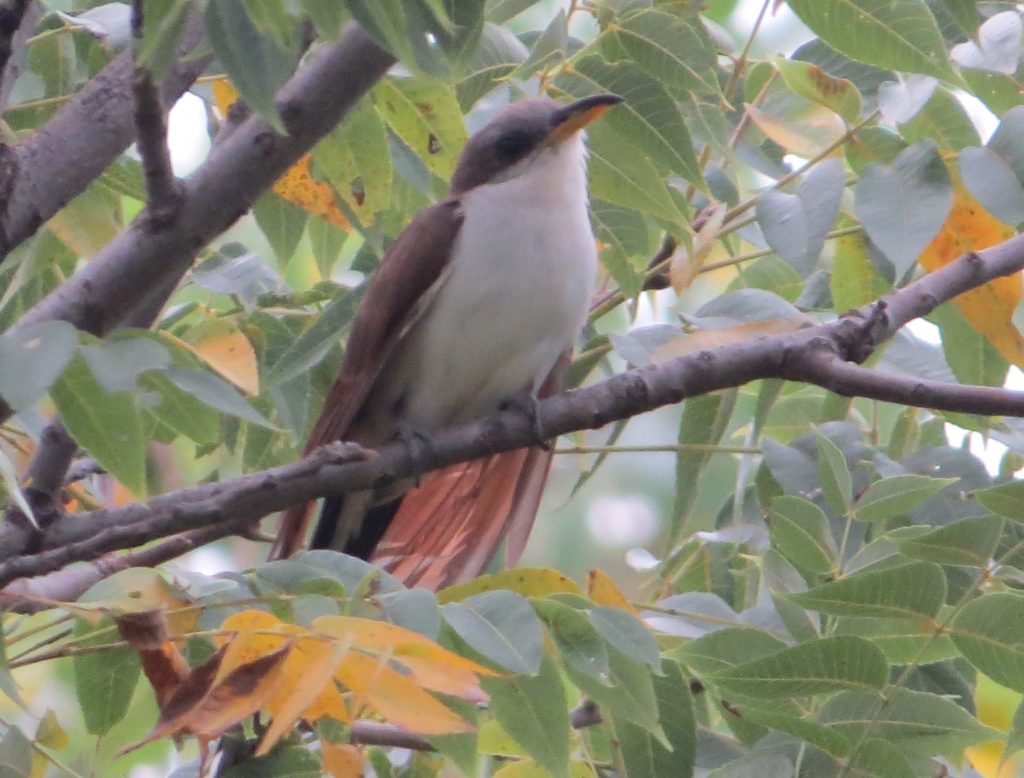 Shortly afterward we heard another hoped-for/expected lifer, the Carolina Wren. Eventually I got to see a couple of them. Their tea-kettle song is awesome.
Shortly afterward we heard another hoped-for/expected lifer, the Carolina Wren. Eventually I got to see a couple of them. Their tea-kettle song is awesome.
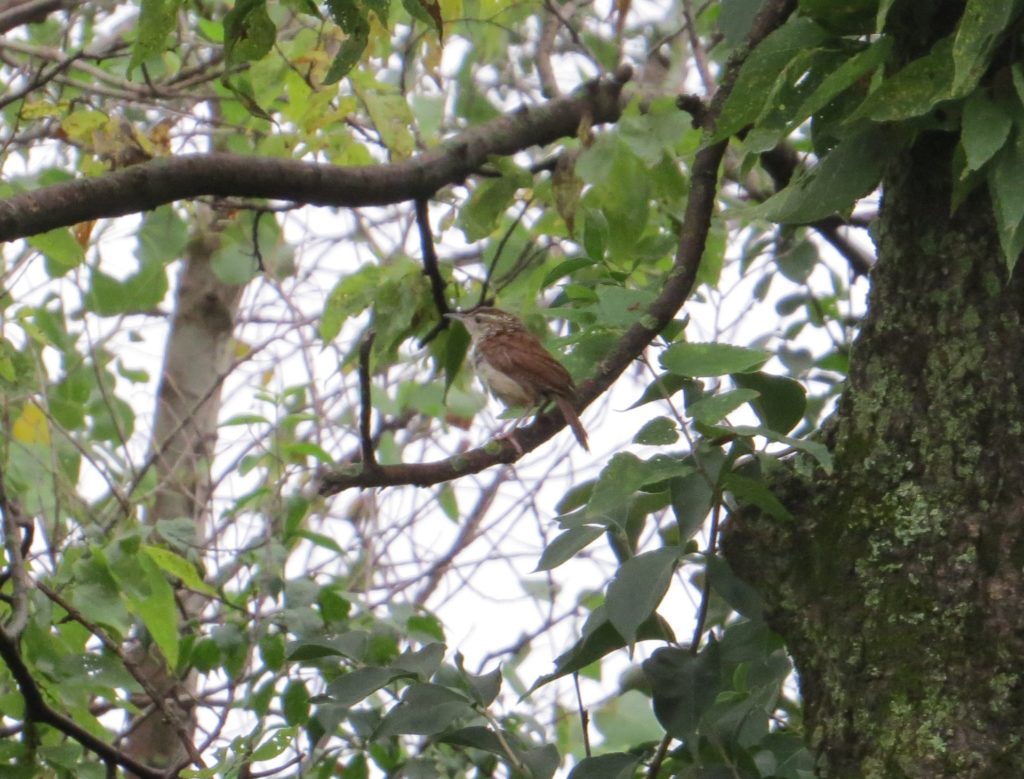 After giving up on the Painted Bunting search, we headed out into the countryside south of Kansas City. Malcolm had some ideas about where to find Scissor-tailed Flycatchers. And find them, we did.
After giving up on the Painted Bunting search, we headed out into the countryside south of Kansas City. Malcolm had some ideas about where to find Scissor-tailed Flycatchers. And find them, we did.
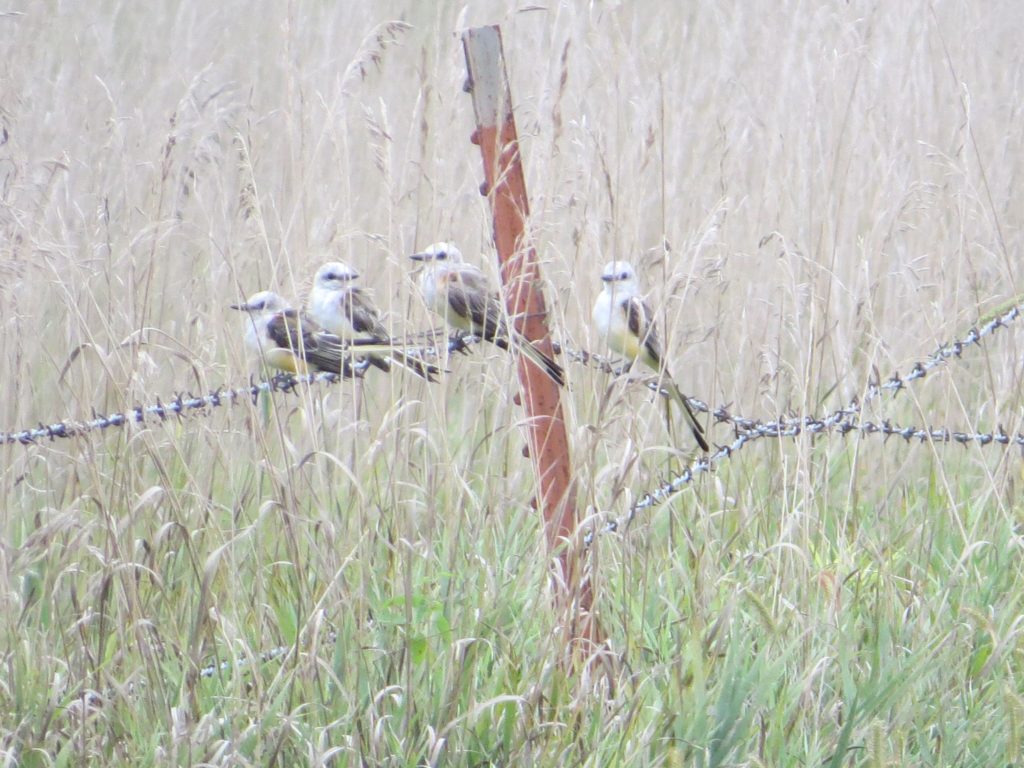 We never found any with super-long tails, but at one point we had about 30 of them all together on the wires and fences around us. It was a crazy, cool sight even if most were nubby.
We never found any with super-long tails, but at one point we had about 30 of them all together on the wires and fences around us. It was a crazy, cool sight even if most were nubby.
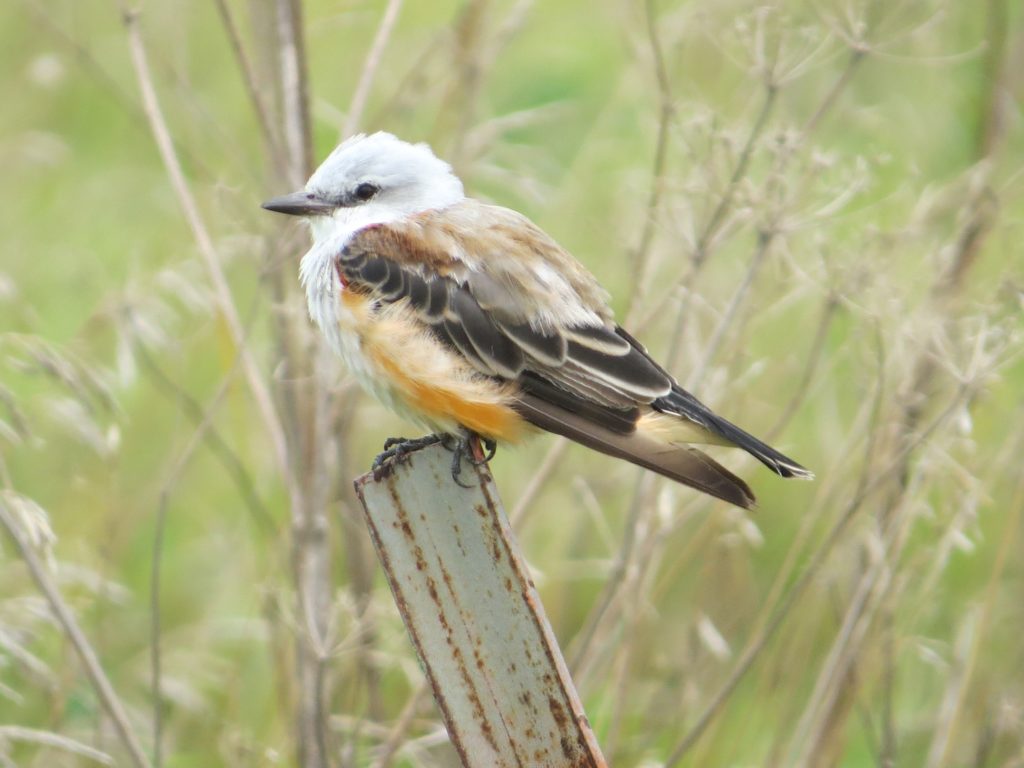 Some had tails of decent length, enough to showcase the big forked-tail when they flew.
Some had tails of decent length, enough to showcase the big forked-tail when they flew.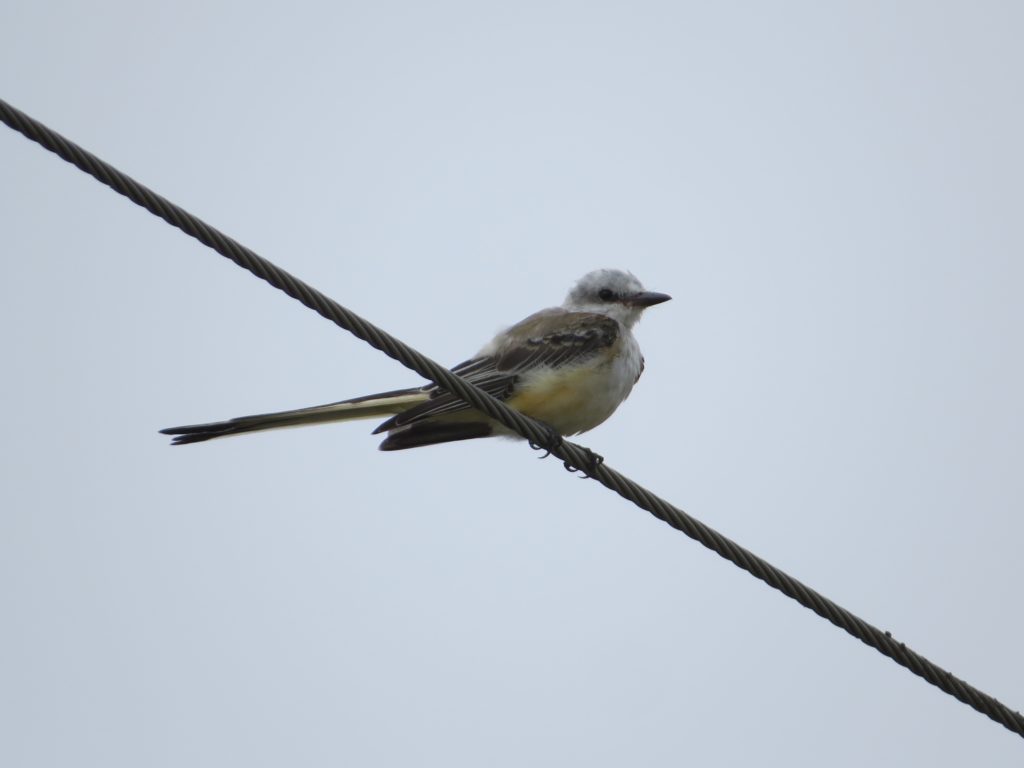
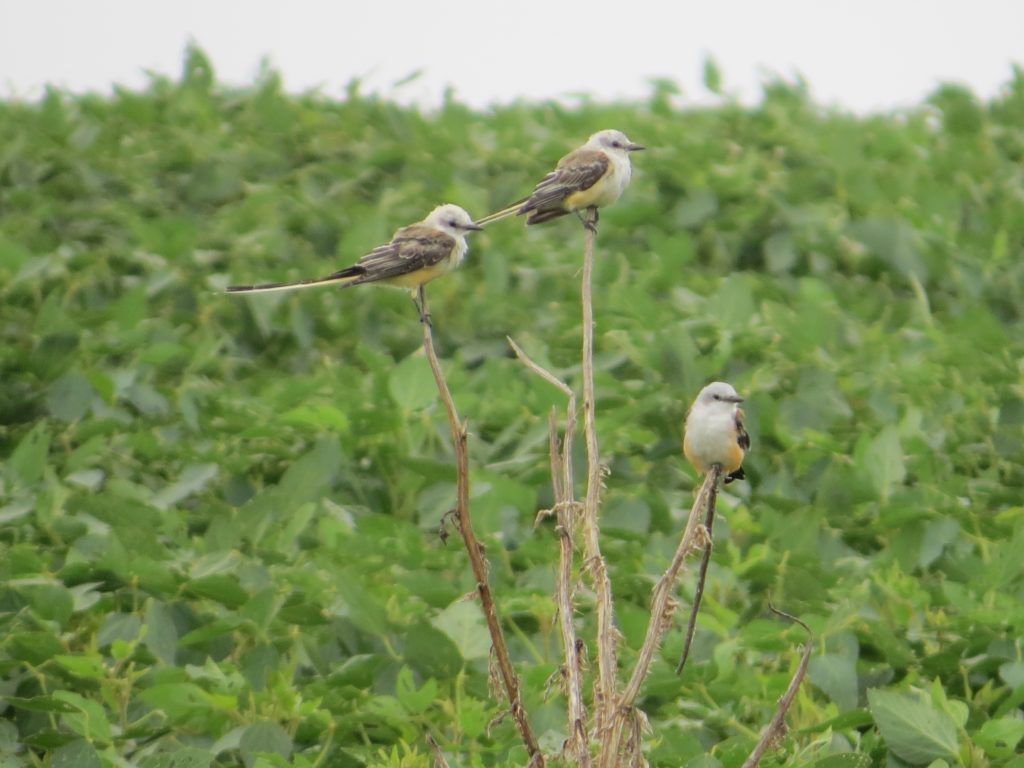 After enjoying the pile of Scissors for awhile, Malcolm took me to a spot to look/listen for Northern Bobwhite. We weren’t having any luck, so for the heck of it I tried playing a recording. Almost immediately a Northern Bobwhite called back! We never did see one, so this bird will have to enter the life list as a heard-only. I’m okay with that.
After enjoying the pile of Scissors for awhile, Malcolm took me to a spot to look/listen for Northern Bobwhite. We weren’t having any luck, so for the heck of it I tried playing a recording. Almost immediately a Northern Bobwhite called back! We never did see one, so this bird will have to enter the life list as a heard-only. I’m okay with that.
Here’s a tip for you when going on a trip like this: set aside a limited amount of time to go birding away from the family and stick to it; don’t get greedy. With just a little over an hour left to bird before I had to be back to the hotel at noon, Malcolm took me through some neighborhoods near our hotel to try to dig out a lifer Mississippi Kite. MIKI just wasn’t in the cards for us that day. Even though we were Kite-less, it was a great morning of birding with a friend. Thanks Malcolm! After he dropped me off, the agenda switched to getting some authentic KC barbecue and going to the K to see the Twins. On the way to the game I was 95% certain I saw a Mississippi Kite gliding above the freeway, but I didn’t claim it.
Day 4 was the return trip home. This time we would be taking the freeways to bust home quickly. Before we left town, though, I wanted to check along a certain street in the KC suburb of Shawnee for one last try at a Mississippi Kite. Almost right away we saw a raptor that looked odd to us lift off a pole. In fact, Evan who didn’t really know I was still looking for a Kite, piped up from the back seat, “Dad, I think I just saw a Mississippi Kite.” I thought so too, but we needed something better. After cruising up and down the street a couple times we finally had a no-doubt-about-it sighting as one flew over. After a couple more up-and-down passes on the street, we saw it again and this time it perched in someone’s backyard tree offering incredible views of our newest lifer.
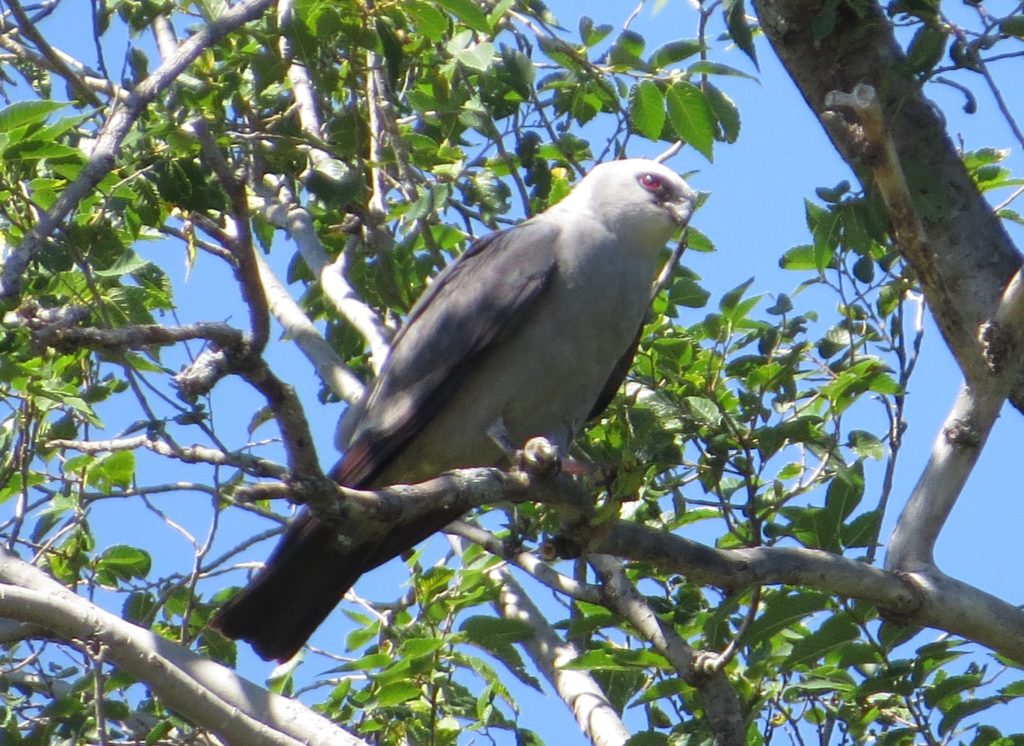 Malcolm had told me that MIKIs catch dragonflies on the wing, and that’s exactly what this one had done.
Malcolm had told me that MIKIs catch dragonflies on the wing, and that’s exactly what this one had done.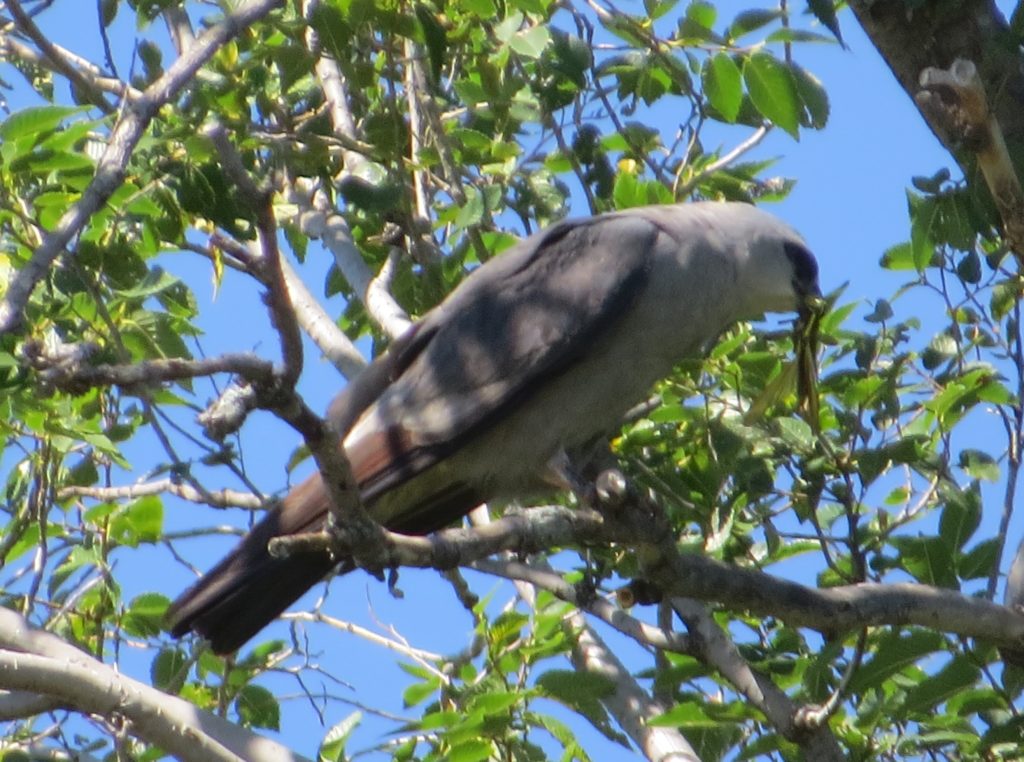 But then I noticed there was a juvenile MIKI. That dragonfly was the dinner that its mom or dad brought back for it.
But then I noticed there was a juvenile MIKI. That dragonfly was the dinner that its mom or dad brought back for it.
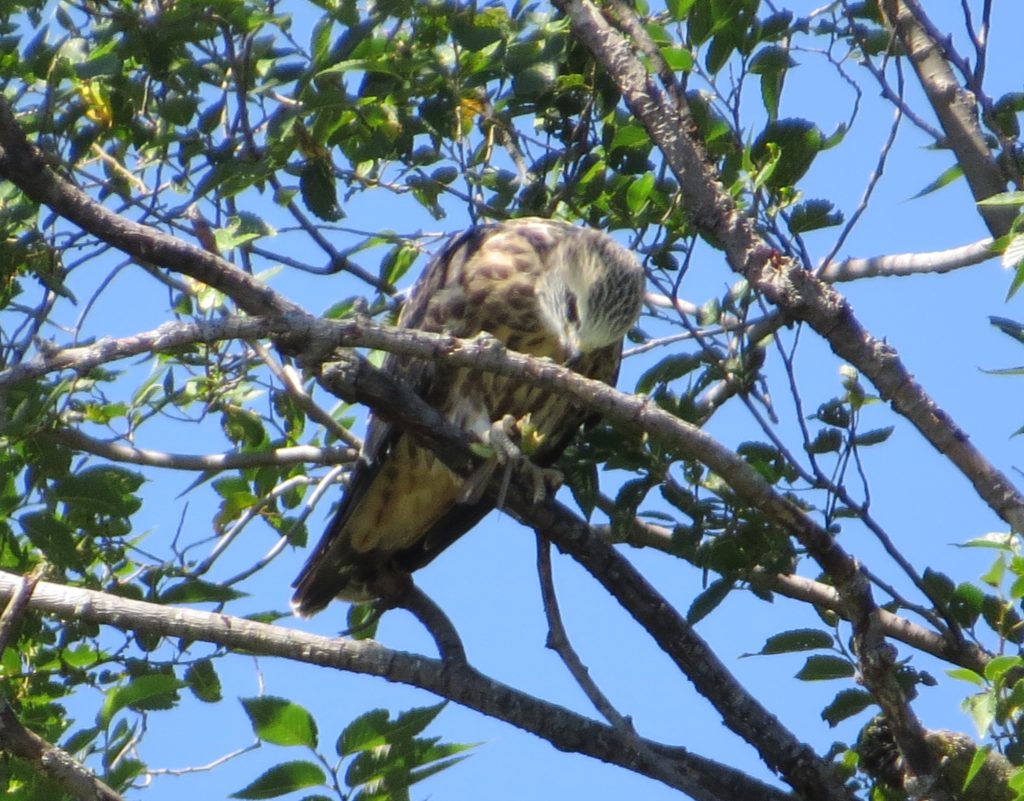
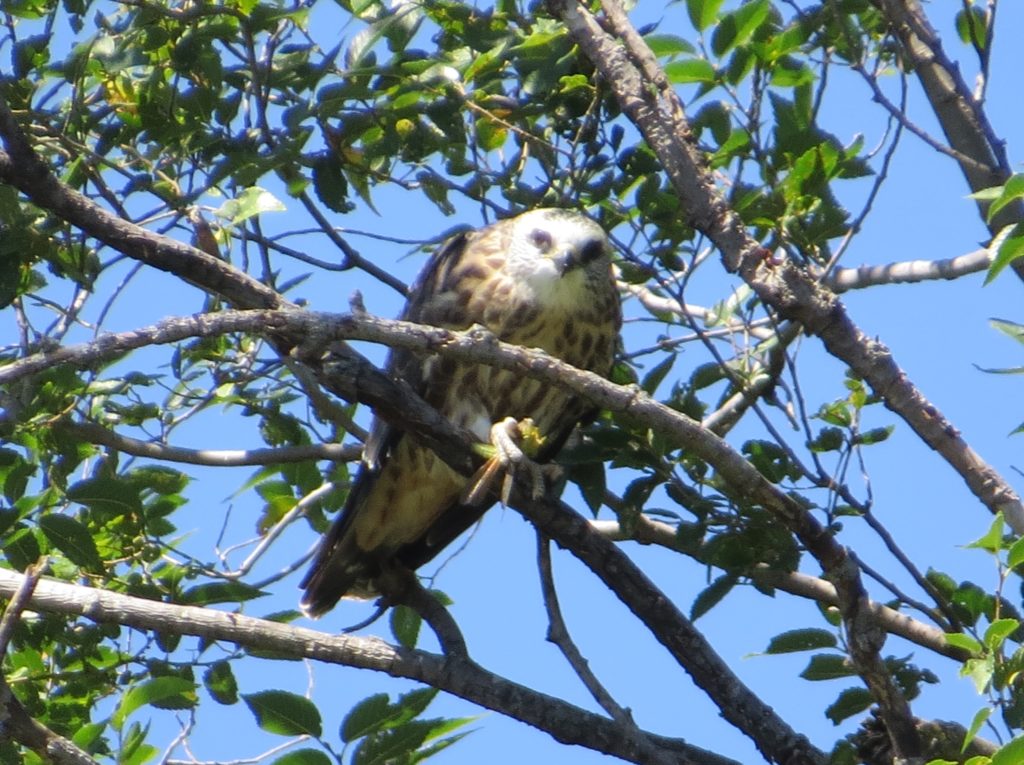 After the dragonfly transfer had been made, the adult took to the skies to find another. Seeing these birds glide around gracefully like their namesake is quite the sight.
After the dragonfly transfer had been made, the adult took to the skies to find another. Seeing these birds glide around gracefully like their namesake is quite the sight.
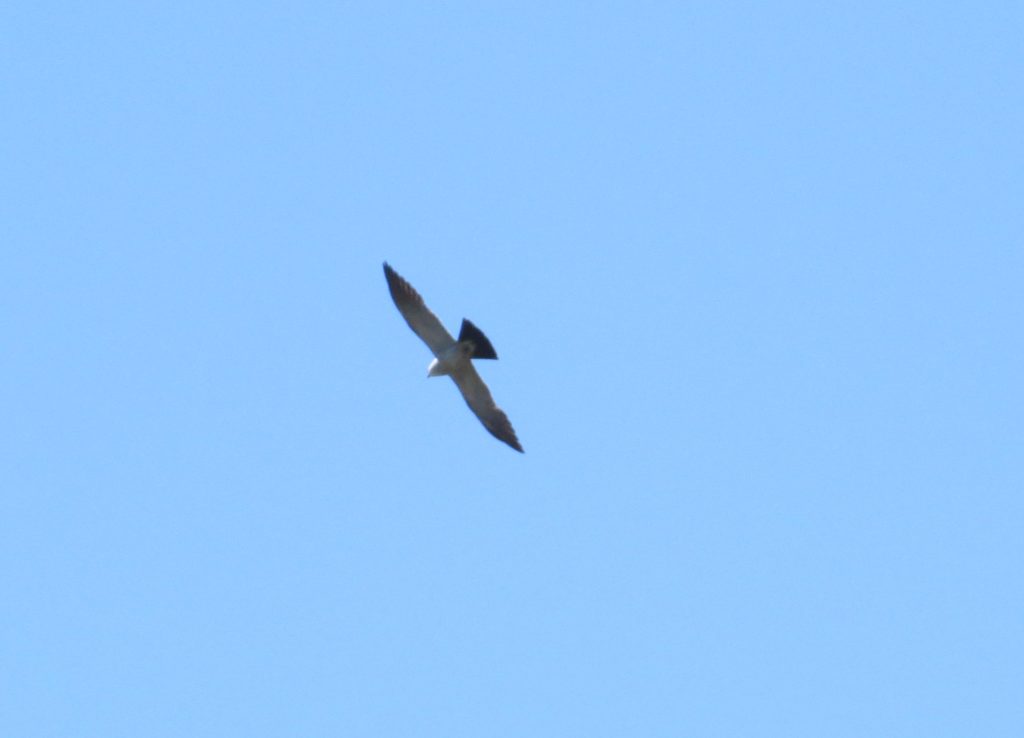
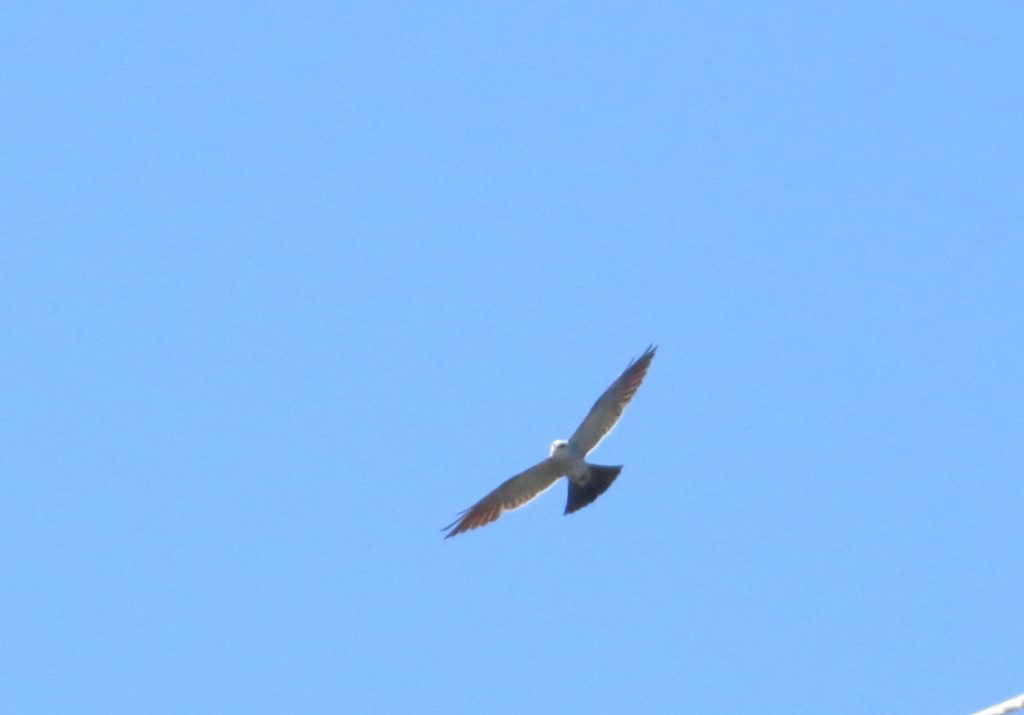 Having now seen one fly, Evan and I are certain we did see one the previous day on the way to the Twins game. This experience has also given me confidence that I would recognize this unique silhouette should I see it in the skies over Minnesota some day.
Having now seen one fly, Evan and I are certain we did see one the previous day on the way to the Twins game. This experience has also given me confidence that I would recognize this unique silhouette should I see it in the skies over Minnesota some day.
With the Mississippi Kite, I had now seen all the lifers I thought I had a chance of seeing on the KC adventure. It was a great way to finish the trip. There were six lifers in all, seven if you count the Cuckoo, and a lifer was seen on each of the four days we were gone. It was a great trip of baseball, pools, and birds. Everyone went home happy.
Red Knot
Not Again, Dad
I have this working idea that all Minnesota birders should band together and chip in to pay John Richardson a salary to find us good birds full time. John’s long list of great finds is extraordinary, and he seems to turn up something spectacular wherever his peregrinations take him. August 10th was no exception as he and Butch Ukura turned up a Red Knot at the North Ottawa Impoundment in Grant County on their way home from seeing the Black-headed Gull in Lyon County.
This Knot was the second one to come up so far this year, but I hadn’t been able to chase this potential lifer last spring. Since I did have a free schedule this time and since the bird was just 1.5 hours away, it meant a chase was on when the bird was relocated on August 11th by Charlene Nelson. Much to my kids’ frustration, I was watching them while Melissa was at a meeting when the chase status had been upgraded from ‘maybe’ to ‘go-time’. This meant they had to go with me. Actually the kids are pretty good about this type of thing and are used to quickly and independently assembling a bird-chase-survival kit of electronics, books, and everything they might possibly need to endure another one of dad’s trips…except food. A quick stop for pretzels turned into a subsequent stop down the road for drinks. Eventually we made it to North Ottawa, just not within 1.5 hours. 🙂
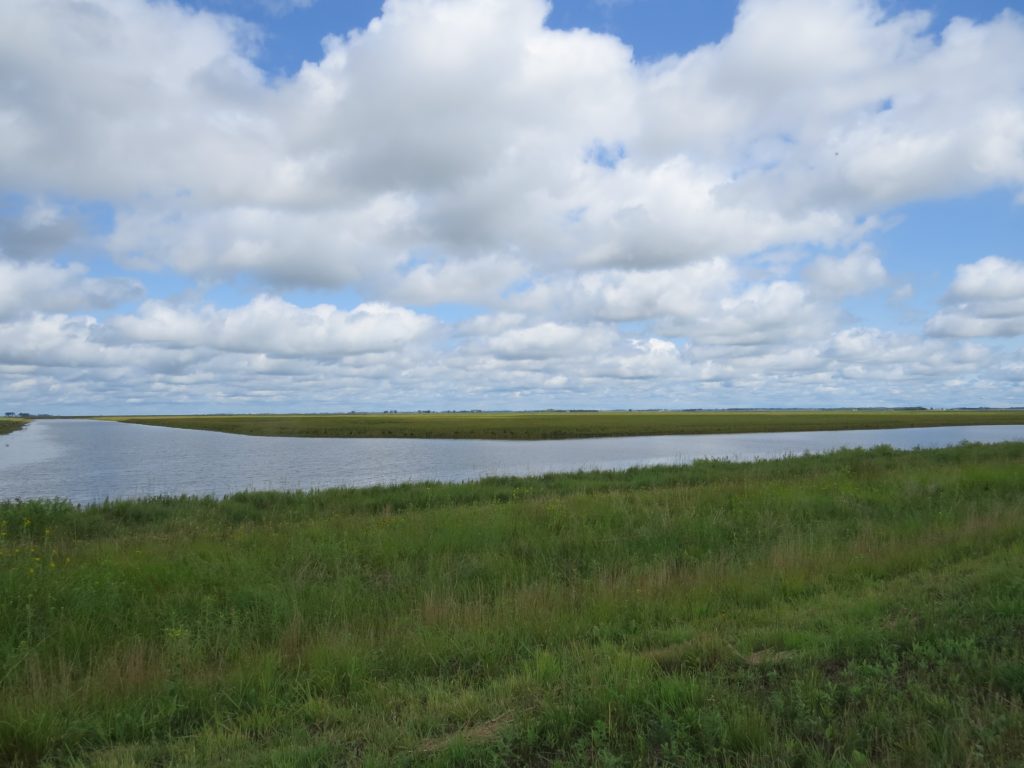 It was fun to return to this area. Two years prior, Randy Frederickson, Evan, and I came up here for a tidy haul of good birds in one trip: White-winged Dove, Cattle Egrets, Black-necked Stilts, and Loggerhead Shrike. This time I was looking for another great gift from Grant, and luckily, I found it.
It was fun to return to this area. Two years prior, Randy Frederickson, Evan, and I came up here for a tidy haul of good birds in one trip: White-winged Dove, Cattle Egrets, Black-necked Stilts, and Loggerhead Shrike. This time I was looking for another great gift from Grant, and luckily, I found it.
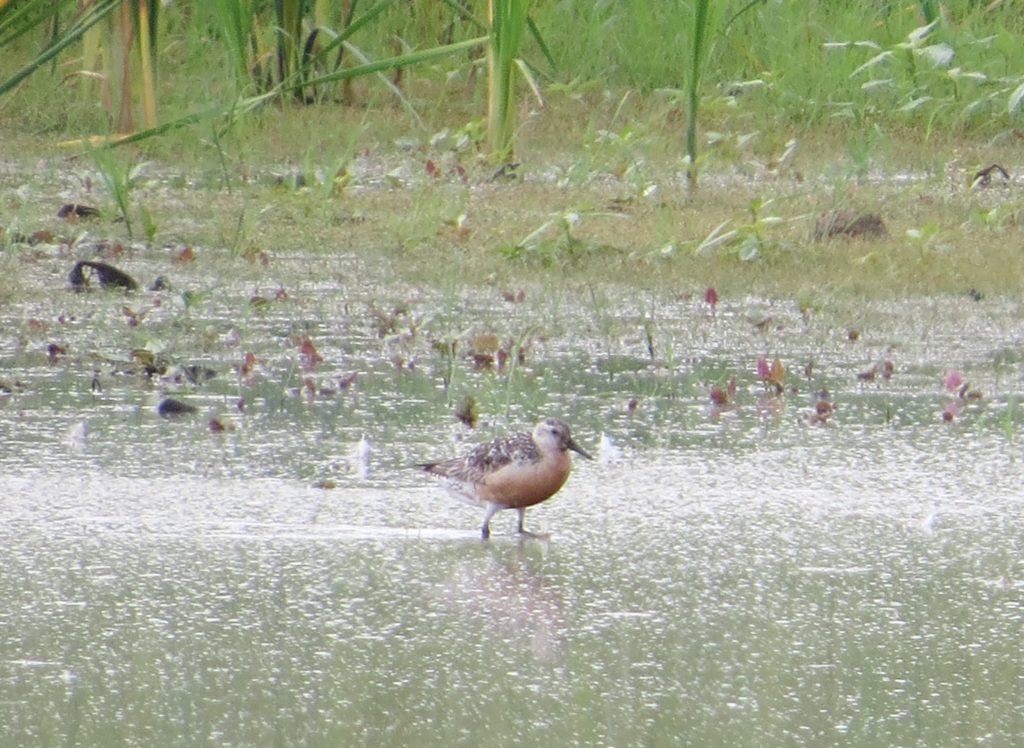 Initially I couldn’t find it and panicked since Joel Schmidt had just been there before me and assured me it was still there. It took me a good ten minutes to finally spot it, and I may or may not have been crabby and short with the kids during those tense first few minutes as they loudly pestered one another in the backseat to fight off the boredom. But with the chubby red bird now officially in sight, I was much more at ease and took things in stride.
Initially I couldn’t find it and panicked since Joel Schmidt had just been there before me and assured me it was still there. It took me a good ten minutes to finally spot it, and I may or may not have been crabby and short with the kids during those tense first few minutes as they loudly pestered one another in the backseat to fight off the boredom. But with the chubby red bird now officially in sight, I was much more at ease and took things in stride.
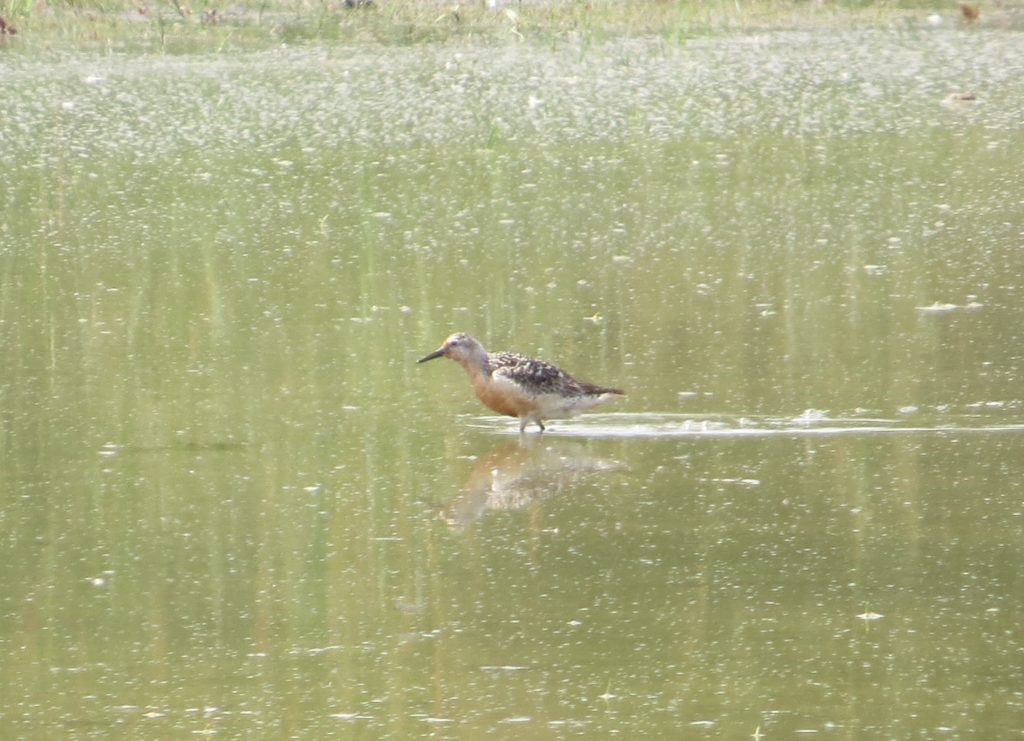
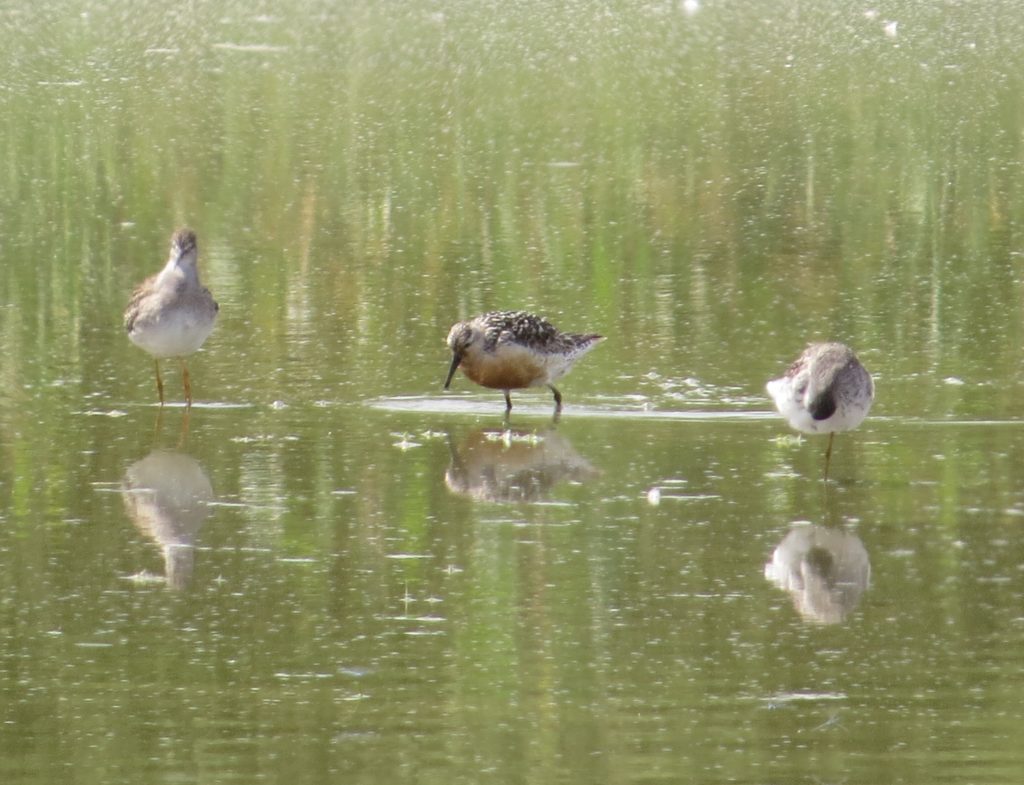
Evan opted not to see this bird and instead stayed in the car with Marin where they were play-fighting/wrestling/giggling and just generally getting along. He did hop out once when we spied a Garter Snake cross the road as the kid has become a herper lately and has been wanting to catch a snake bad. He missed the snake as it slithered into the grass off the road. Shucks.
After spending some time photographing the Knot, we drove around the entire impoundment. Our only other significant find were four Western Grebes which is always a nice year bird to tally. Then we were FINALLY (as the kids would say) on the road home. But then I got a message from Dan Orr that he had found some Buff-breasted Sandpipers in Kandiyohi which were conveniently on the way home. The kids found nothing convenient about it– the resulting groan from the announcement of another birding stop was deafening. They have learned that there is no such thing as a quick stop when it comes to birds. But stop we did. Joel Schmidt had gotten there ahead of me and hadn’t yet located the Buff-breasteds but had located a dashing Black-bellied Plover in full breeding plumage! This felt like a lifer in its own right since I had never seen one so properly dressed before. Too bad it was so far away for decent photos.
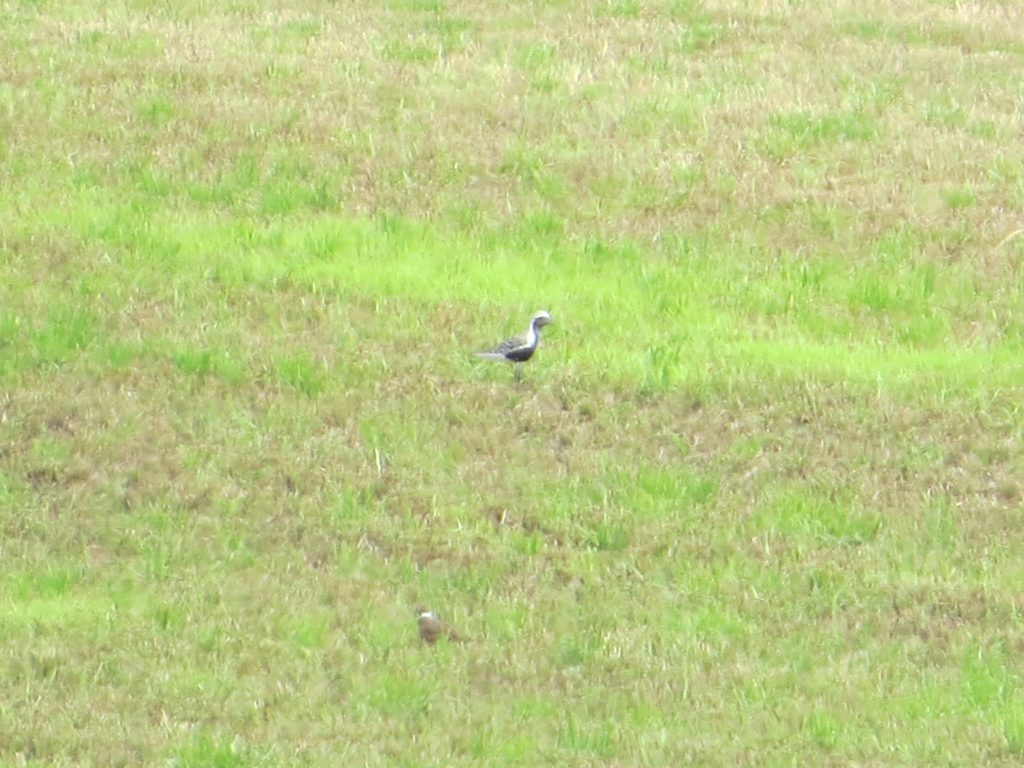 Eventually Joel and I found the Buff-breasteds and eventually I did get those kids home. After all, we had a lot of things to do at home, like get ready for out-of-state birding trip to grab some lifers and do some other fun things. That story is coming next.
Eventually Joel and I found the Buff-breasteds and eventually I did get those kids home. After all, we had a lot of things to do at home, like get ready for out-of-state birding trip to grab some lifers and do some other fun things. That story is coming next.
You Answered the Call (of the BLGR), Minnesota
Since my last post in which I explored the possible range expansion of the Blue Grosbeak and how it might be occurring via waterways, there have been a couple of exciting developments. Two new county records for Blue Grosbeak have been found! Those two red markers in the upper left of the photo are new since my last post.
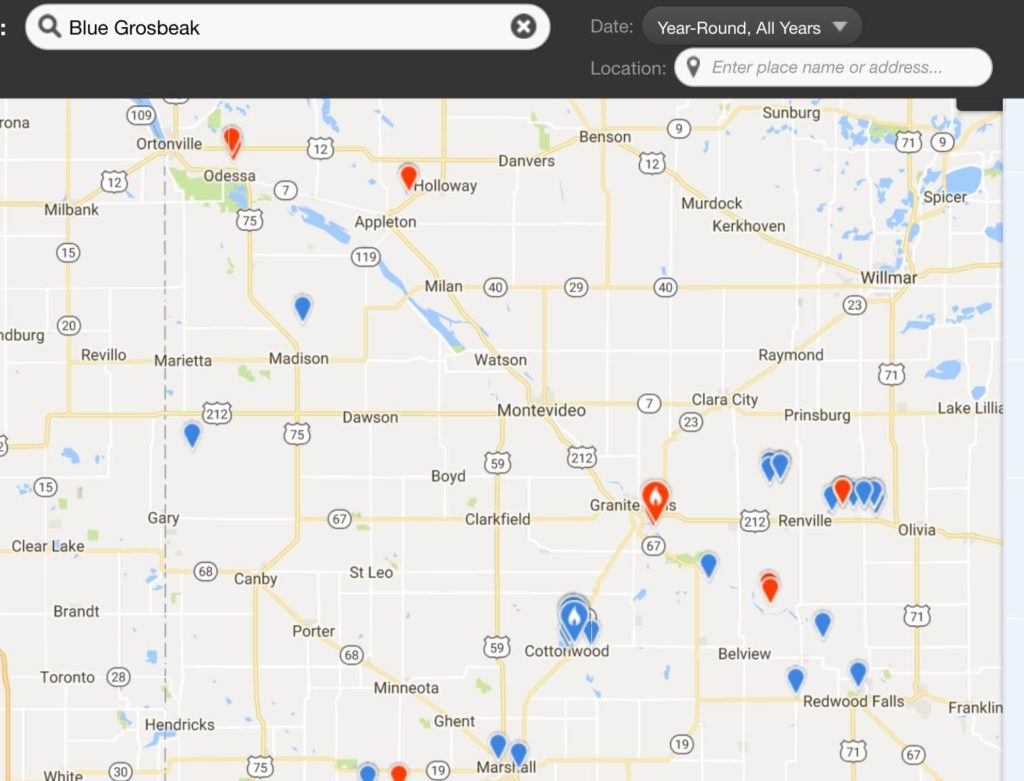
On August 13th, a new county record Blue Grosbeak was found in Big Stone County by Milt Blomberg, John Hockema, and Lance Vrieze. Not only is this significant for being a county first, but these guys found a family of this species the furthest north they’ve been found in Minnesota, vagrants excluded. Moreover, their find fits the pattern of the bird being found all along the Minnesota River Valley. These guys stopped at a gravel pit, thought the habitat looked right for BLGR, and played a recording. Instantly they had Blue Grosbeaks come in without ever having seen or heard any before playing the recording.
I don’t know whether or not my article influenced their decision to try for Blue Grosbeaks in Big Stone County, but Dan Orr had told me that my last blog post got him curious about Swift County as the very southwestern corner of that county is along the Minnesota River. Swift previously had no BLGR record. I was excited about Dan’s search and started to scout satellite imagery in southwestern Swift for appropriate habitat. I shared with him a gravel pit area just north of Appleton. However, Dan told me he had already birded that spot in early summer. Since Blue Grosbeaks seem to be actively singing in August, I encouraged him to try again and told him how Milt Blomberg et al. “cold-called” their Blue Grosbeaks. So Dan tried it on August 15th. He went to that area, played a tape, and bam–a pair of Swift County record Blue Grosbeaks showed up!
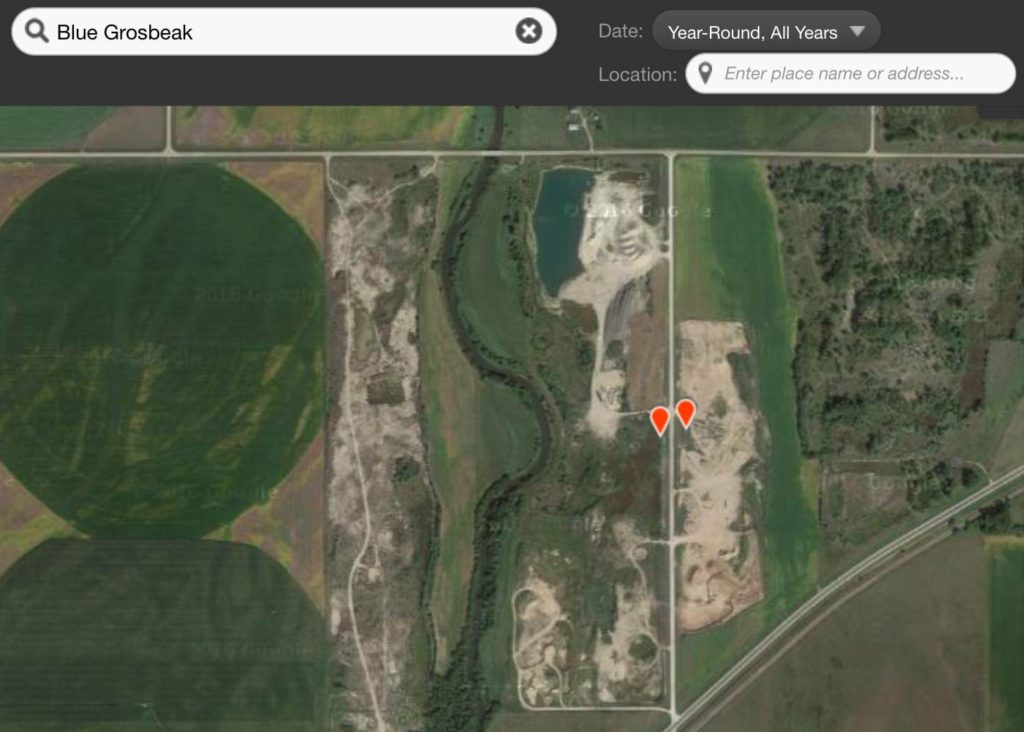
As exciting as the Big Stone and Swift Blue Grosbeak finds are, I am concerned. Now that two county records have fallen, birders have been going to these stake-outs to get their tics. And once they have their tic for a county, many birders are less likely to explore new areas to look for more Blue Grosbeaks in those counties. With the Swift and Big Stone records, now very few counties along the Minnesota River still do not have a record. In fact, I believe Sibley, Carver, and Hennepin are all that remain. Hopefully the county-listing bug will help turn up new records in these counties. But I continue to think that there are many, many more Blue Grosbeaks to be found in Minnesota where county records already exist, namely along the Minnesota River Valley and anywhere in southern Minnesota. So call up a birding friend, go exploring, and find some Blue Grosbeak habitat. There is probably a two-week window left to find these birds before they head south again. And if you find appropriate habitat and don’t hear or see one, play the recording and see what happens. You might be surprised.
